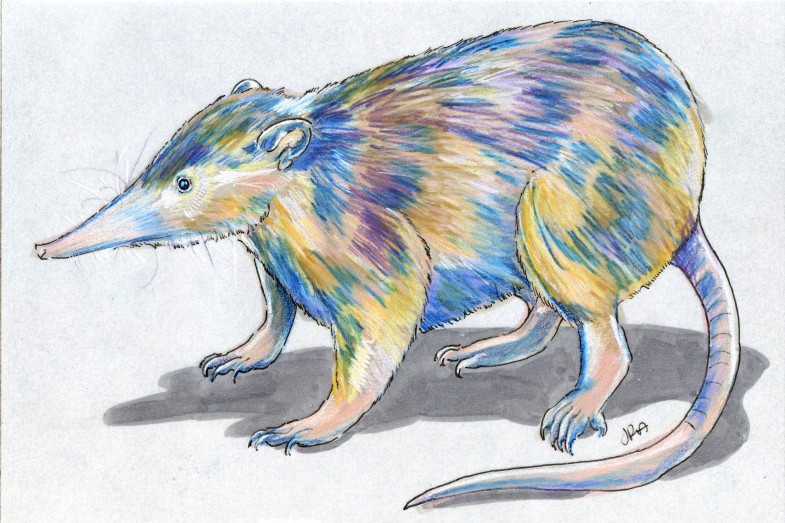Hispaniolan Solenodon (Solenodon paradoxus)
This shaggy, shrewy solenodon lives only on the island of Hispaniola, which comprises Haiti and the Dominican Republic. This species is one of only two in the solenodon genus. The other lives in Cuba.
The word solenodon comes from the Latin for groove-tooth, referring to an unusual feature: solenodons’ lower incisors have a channel connected to a gland, through which they can inject venom. While there are a few other venomous mammals, such as the male duck-billed platypus and a couple species of shrew, only solenodons can actively inject poison with their teeth.
The two solenodon species, genetic research tells us, diverged from all the rest of mammalia some 76 million years ago, during the Cretaceous period, when dinosaurs dominated the earth. This is crazily early. And the two species separated from each other about 25 million years ago, which means they’re not even that closely related. (This is around the time—give or take a few million years—that humans diverged from the Old World monkeys such as this week’s proboscis and Tonkin snub.)
Like other island dwellers, the Hispaniolan solenodon neglected to acquire the adaptations that would give it half a chance to survive against bigger, more intimidating predators. It was used to being a big fish (mammal) in a small pond (island), and so the humans who showed up, along with their accompanying dogs and mongooses, have been able to drive it into a perilously endangered existence.
BBC News, January 9, 2009: “Venomous mammal caught on camera.” (Thanks, Clare!)
EDGE (Evolutionarily Distinct & Globally Endangered) blog, January 9, 2009: “Hispaniolan solenodons—rediscovery and footage!”


Very cool. I love my Cretaceous critters. You should try doing some reconstructions of some extinct mammals (maybe some multituberculates)…maybe you have. I don’t know.
Thanks, Jack Daw. I would like to draw more extinct mammals…but maybe after I draw the 5,000 non-extinct ones!
Oh I’m glad you did solenodon! He’s such a whiffly, busy little thing (despite his venemous bite).
He certainly is whiffly and busy! I didn’t see, in the articles I read, a reference to the effect the venom has on humans, although I could have overlooked it. I wonder a solenodon’s bite can kill us. I did read that they’re not immune to their own venom, so if one solenodon fights another, the outcome is often fatal.
Actually this BBC News article says their venom is not deadly to humans, though whether it would have an affect isn’t mentioned:On the trail of a ‘living fossil’, BBC News, May 30 2010 Wow, for such a tiny shrew-like beastie, they’ve survived 76 million years and the extinction of the dinosaurs. Very humbling, lets hope they can continue to survive!
Grant, thanks for the link to the new article! Good to know the venom won’t kill us. I too hope they can continue to survive. I find myself rooting against humans more and more these days, sadly.
didnt get lots of info but its soooooooooooo cute:)